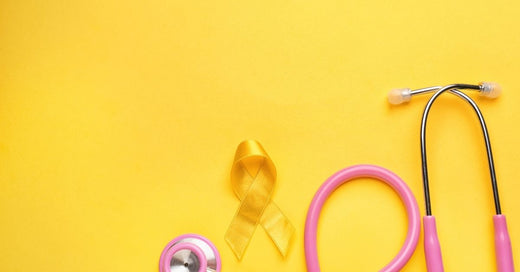Endometriosis impacts fertility, quality of life, relationships and mental health, but getting a diagnosis can be challenging. It can take 8 to 12 years before receiving a diagnosis of endometriosis [1]. That is a LONG time!
Painful periods can be one symptom of endometriosis (although pain is not always present with endometriosis), and you may also have heavy menstrual bleeding, fatigue, pain with intercourse, bowel habit changes across your menstrual cycle, pain with intercourse and be having trouble conceiving.
Symptoms may be severe or very mild, and can differ between individuals. These symptoms may also be overlooked or dismissed, or attributed to another condition such as Irritable Bowel Syndrome (IBS), extending the time to diagnosis. If you think you have endometriosis don't suffer in silence! See your health care practitioner who can refer you to a specialist gynaecologist.
Finding out if you have endometriosis may also take a long time as diagnosis entails surgical exploration. A laparoscopy is the gold standard for diagnosis, and this involves keyhole surgery to look around the abdomen and pelvis, and possibly a biopsy of any tissue suspected to be endometriosis.
While a laparoscopy is the gold standard to determine if you have endometriosis, it may still be difficult to detect all endometrial lesions, particularly if they are sitting behind the abdominal cavity (retroperitoneal) on parts of your urinary system, pelvic floor or nerves.
Early diagnosis is important as it may reduce the long-term impacts of endometriosis, particularly those for our fertility. So how can we make diagnosis more accessible, or even better: how can we make it less invasive? [2].
Are there other makers or indicators of endometriosis with diagnostic potential?
We are not yet able to diagnose endometriosis with a less invasive blood test (wouldn't that be great!), but here are some markers and tests that look promising for the future!
Imaging
Pelvic endometriosis is challenging to diagnose although a transvaginal ultrasound or MRI with an experienced operator and radiologist has the potential to be highly accurate in detecting deep infiltrating endometriosis. MRI may also be superior for diagnosing endometriosis on parts of the bowel and on the bladder [3, 4, 5].
If you have endometriosis and have had a transvaginal ultrasound you will know that feeling of ‘tenderness’ that can come with all the poking and prodding (please don’t push on my left ovary!). ‘Soft markers’ of endometriosis can include tenderness in certain areas, reduced mobility of ovaries and pockets of peritoneal fluid in the pelvis.
Imaging may be a helpful tool to support diagnosis, and useful to help your surgeon in planning for surgery to remove (excision) or destroy (ablation) endometriotic lesions.
What’s in my Blood?
Endometriosis is associated with an increase in circulating markers of inflammation. Potential indicators of endometriosis include serum cancer antigen 125 (CA125) [6], an increased neutrophil-to-lymphocyte ratio, and increased inflammatory cytokines.
While these may be helpful in initial investigations, these makers are not specific to endometriosis alone. There may be more promising blood markers, including specific micro RNAs [1], although more research in this space is required.
Peritoneal Fluid
Peritoneal fluid is found in the abdominal and pelvic cavity. The composition of your peritoneal fluid can have an impact upon your reproductive health.
With endometriosis the peritoneal fluid tends to be pro-inflammatory, and there are also pathogens present in the peritoneal fluid such as Pseudomonadaceae Pseudomonas, Prevotellaceae Prevotella.
Peritoneal fluid contains higher levels of macrophages, growth factors and cytokines – all components that promote an inflammatory environment. A combination of these factors in peritoneal fluid (SCGF-β, IL-13, and G-CSF) may be helpful to predict, but not diagnose, if you have endometriosis [7].
These chemical communicators promote adhesion and there is a reduction in normal cell clearance, all contributing to endometrial lesions. If you have endometriosis strategies to dampen inflammation may provide symptom relief and reduce long term impacts.
Obtaining a sample of peritoneal fluid requires inserting a needle into the abdomen. This is still quite invasive so would there be a way to diagnose endometriosis without a needle? How about providing a poo sample?
Gut Microbiota
The gut microbiota in endometriosis is different from that of women without endometriosis. Animal models support that there is a bidirectional effect between endometriosis and our gut residents. Some researchers postulate that the gut microbiota may even drive the onset of endometriosis and this is an exciting area for future investigations!
In women with laparoscopy confirmed endometriosis there was a depletion of protective microbes in gut [8]. Women with endometriosis have lower concentrations of beneficial Lactobacilli bacteria, and higher levels of potentially pathogenic bacteria that increase inflammation.
The microbiota also changed with the stage of endometriosis.
Our gut microbiota influence oestrogen levels, inflammation and the production of beneficial short chain fatty acids that dampen endometriosis lesion growth. While our gut microbiota are not yet being used clinically to diagnose endometriosis, this is a promising therapeutic target for managing endometriosis.
Looking Forward
Australia is making headway to raise awareness of endometriosis and improve patient care with the release of the National Action Plan for Endometriosis released in 2018.
If you are wondering what you can do to help support individuals with this chronic condition (my hand is up!) why not:
1. support endometriosis organisations like @QENDOAU https://www.qendo.org.au/. Share a social media post to help raise awarenss about support services or find out about volunteering.
2. support research. This is integral to shorten the time to endometriosis diagnosis, and to improve treatment options and support. Could you make a donation or be a participant in a research study?
3. talk openly and listen. The more we share, listen and advocate, the more we build a community of friends, family and professionals that will deliver better health outcomes.
Are you 1 in 9?
Learn how to nurture your gut microbiome with Create a Fertile Gut
References
1. Kiesel, L. and M. Sourouni, Diagnosis of endometriosis in the 21st century. Climacteric, 2019. 22(3): p. 296-302.
2. Facchin, F., et al., Impact of endometriosis on quality of life and mental health: pelvic pain makes the difference. J Psychosom Obstet Gynaecol, 2015. 36(4): p. 135-41.
3. Lorusso, F., et al., Magnetic resonance imaging for deep infiltrating endometriosis: current concepts, imaging technique and key findings. Insights Imaging, 2021. 12(1): p. 105.
4. Nisenblat, V., et al., Imaging modalities for the non-invasive diagnosis of endometriosis. Cochrane Database Syst Rev, 2016. 2: p. CD009591.
5. Van den Bosch, T. and D. Van Schoubroeck, Ultrasound diagnosis of endometriosis and adenomyosis: State of the art. Best Pract Res Clin Obstet Gynaecol, 2018. 51: p. 16-24.6.
Irungu, S., et al., Discovery of non-invasive biomarkers for the diagnosis of endometriosis. Clin Proteomics, 2019. 16: p. 14.
7. Jorgensen, H., et al., Peritoneal fluid cytokines related to endometriosis in patients evaluated for infertility. Fertil Steril, 2017. 107(5): p. 1191-1199 e2.
8. Huang, L., et al., Gut Microbiota Exceeds Cervical Microbiota for Early Diagnosis of Endometriosis. Front Cell Infect Microbiol, 2021. 11: p. 788836.





